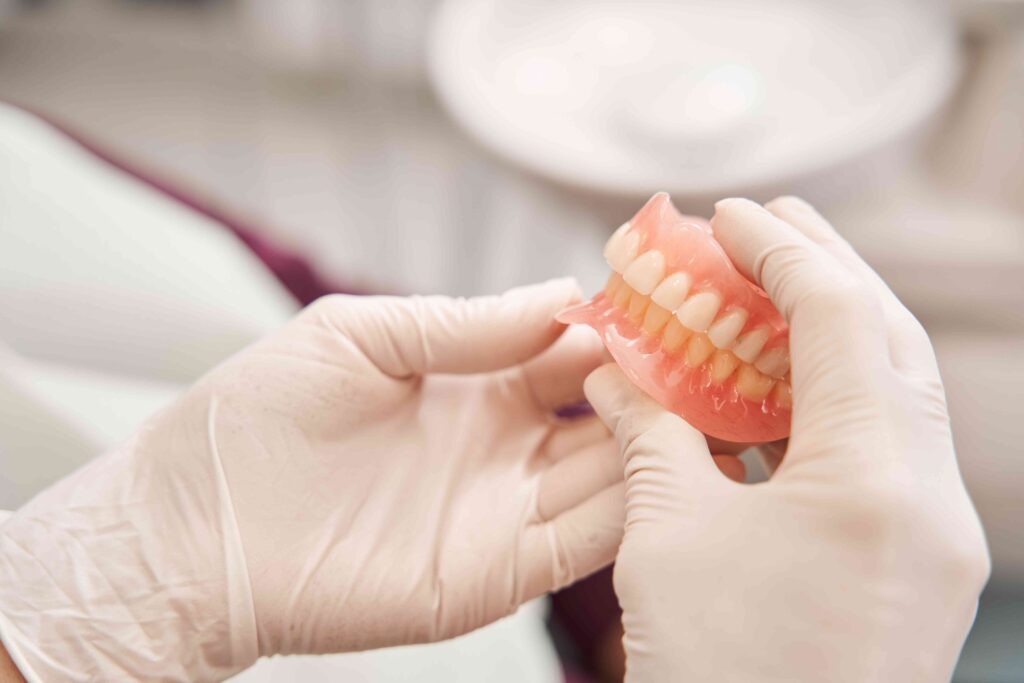
Dentures are a lifechanging tooth replacement option for those who have suffered from extensive tooth loss. They can help you chew your food, speak clearly, and feel confident with your smile. These prosthetics are customized for a perfect fit! However, if yours keeps coming out of place, it can be frustrating. Patients tend to experience this issue more often with lower dentures than upper ones. Read on to learn why dentures become unstable and what you can do about it.
Why Is My Lower Denture Unstable?
There are a variety of issues that can result in lower dentures becoming unstable. Here are some of the most common ones.
- Flat/Negative Ridge: If you have adequate bone height and width, your lower denture is much more likely to remain stationary. This is especially the case if your lower ridge is U-shaped. However, if you haven’t had teeth for many years or have a flatter bone, the lower denture has a more difficult time staying in place.
- Inadequate Denture Border Length: The side of the denture are called “borders.” They need to remain suctioned to the gums. If you don’t have enough saliva, or your saliva is too thick, you could run into some issues.
- Lack of Saliva: A major factor in denture retention is saliva. Saliva helps the denture to remain suctioned to the gums. If you don’t have enough saliva, or your saliva is too thick, you could run into some trouble.
- Impatience: Wearing dentures takes some time to adjust to. You won’t be an expert immediately, but by taking the time to adapt to them and how they function, you are more likely to have success.
3 Ways to Improve the Stability of Bottom Dentures
- Reline: Relines are needed on occasion so the base of your denture can adapt to your ridge anatomy. The mouth is always changing, so your dentures need to be reshaped every few years to continue to fit properly.
- Denture Adhesive: Using a small amount of denture adhesive can help to keep your prosthetic in place. Just remember that with this type of product, more isn’t always better. If your dentures aren’t stationary with minimal adhesive, you may need a reline.
- Practice: Time and patience are necessary when you get dentures. It is important to train the muscles of your face and tongue to get used to the denture. Make sure that you train the muscles of your face and tongue to get used to the denture. Make sure that you chew on both sides of your mouth evenly to avoid excessive pressure on one side. You may also want to try resting your tongue in a different position in your mouth to avoid dislodging your denture.
If your denture isn’t staying in place like it used to, let your dentist know. Adjustments can be made to help your replacement teeth fit comfortably in your mouth.
About the Practice
At Spring Dental, Dr. Joshua Kuykendall and Dr. Alisha Paal work together to treat patients in the Spring community. With their combined experience and expertise, patients can get pretty much anything they need under one roof. If you are struggling with your dentures, they would be happy to help. For more information or to schedule an appointment at their office, visit their website or call (281) 353-9797.
